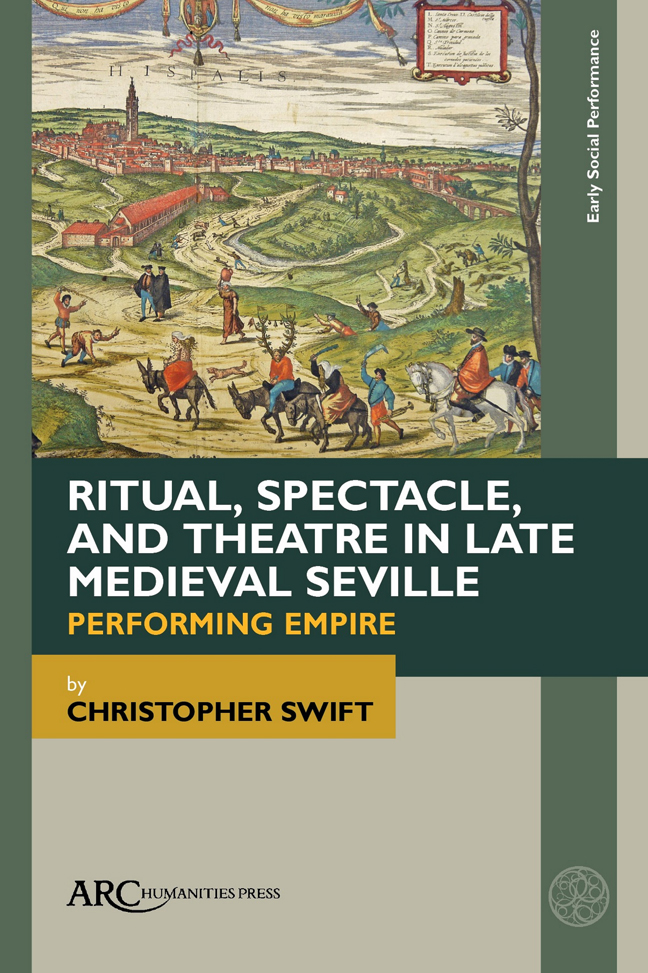Book contents
- Frontmatter
- Contents
- List of Illustrations
- Abbreviations
- Notes
- Acknowledgements
- Introduction. Theatres of Absence
- Chapter 1 The Cantigas de Santa Maria: Theatrical Acculturation of the Andalusi Colony
- Chapter 2 Penance, Conversion, and Affective Convivencia
- Chapter 3 Strange Infidels in the Imperial Metropole
- Conclusion. Walking Ghosts
- Bibliography
- Index
Chapter 1 - The Cantigas de Santa Maria: Theatrical Acculturation of the Andalusi Colony
Published online by Cambridge University Press: 22 February 2024
- Frontmatter
- Contents
- List of Illustrations
- Abbreviations
- Notes
- Acknowledgements
- Introduction. Theatres of Absence
- Chapter 1 The Cantigas de Santa Maria: Theatrical Acculturation of the Andalusi Colony
- Chapter 2 Penance, Conversion, and Affective Convivencia
- Chapter 3 Strange Infidels in the Imperial Metropole
- Conclusion. Walking Ghosts
- Bibliography
- Index
Summary
This is the true reason why the one who sincerely believes finds power in a statue. For just as living creatures receive power through hope, if only they believe, likewise the image receives it instantly from the saint it represents.
Cantiga 297THIS CHAPTER IS about theatrical stagings of the Cantigas de Santa Maria in the thirteenth century during the reign of Alfonso X, “El Sabio” (King of Castile, Galicia, y León, 1252–1284). The celebrated work is a multivolume collection of miracle, festival, and praise songs composed by King Alfonso and the poets and musicians of his court. Most compositions in the collection are cantigas de miragre that recount miracles worked by the Virgin Mary on earth. Cantigas de loor are songs of praise, the text and miniatures of which often involve Alfonso actively adoring, and commanding attention to, Mary. Cantigas de festa were written for celebrations of Marian festivals. The verses of the songs from the four extant manuscripts of the Cantigas collection were composed in Galician-Portuguese, the preferred vernacular of Peninsular itinerant and court entertainers in thirteenth-century Castile, and employed Islamic Andalusi musical and poetic forms known to the court of Alfonso and Iberian trovador culture. The collection of 429 songs was compiled and performed in Seville, the seat of the Castilian monarchy throughout most of Alfonso's reign. Evidence for performance of the songs is embedded in the manuscript verse and illumination, in the marginalia of the Toledo manuscript, and in the codicil of the last will of Alfonso, which commands that
all the books of hymns, miracles, and praise of the Blessed Mary, that they be given to the church in which our body will be buried, and let them be sung on the feasts of the Blessed Mary and of our Lord Jesus Christ.
The “church in which our body will be buried” is the Seville cathedral, a converted twelfth-century Almohad mosque. According to José M. Llorens Cisteró, the Cantigas were performed there through the mid-fourteenth century.
Material, practical, and phenomenological expressions of the Cantigas contributed vitally to the cultural colonization of Andalusian cities acquired by the Castilian monarchs in the second half of the thirteenth century, and in particular the city of Seville, the seat of the Alfonsine court (with Toledo and Murcia).
- Type
- Chapter
- Information
- Ritual, Spectacle, and Theatre in Late Medieval SevillePerforming Empire, pp. 29 - 86Publisher: Amsterdam University PressPrint publication year: 2023



